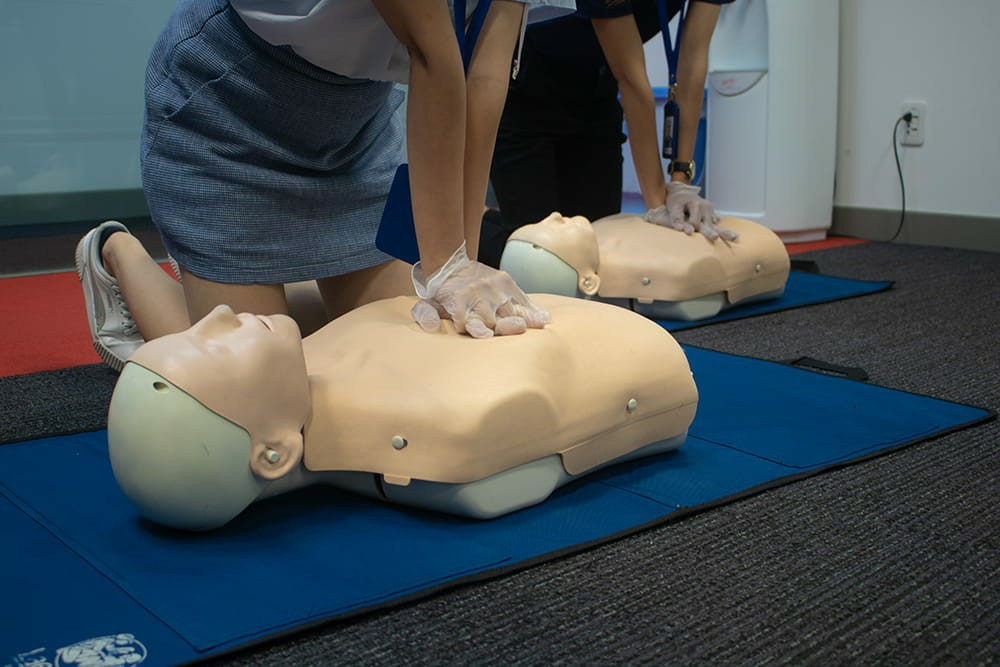Empower and Protect: The Indispensable Role of First Aid and CPR Training in Your Workplace
In today's fast-paced work environment, emergencies can happen at any moment. Businesses, regardless of their size or industry, must prioritize the safety and well-being of their employees. One of the most effective ways to ensure workplace safety is through comprehensive First Aid and CPR training. This training equips employees to respond to medical emergencies promptly, potentially saving lives and minimizing injuries.
The Value of First Aid Certification for Employers and Employees
Investing in a First Aid Course or First Aid Certification significantly enhances employee preparedness. Here’s why:
- Increased Confidence: Employees trained in First Aid and CPR techniques gain confidence in their ability to handle emergencies. Knowing how to respond to a crisis helps alleviate panic and empowers individuals to act decisively.
- Enhanced Workplace Safety: By having certified personnel on-site, businesses can reduce the severity of injuries. Prompt medical response can be crucial in emergencies, making First Aid response invaluable.
- Legal and Regulatory Compliance: Compliance with workplace health and safety regulations is non-negotiable. Many regions require businesses to have trained individuals ready to respond to emergencies, making First Aid training not just beneficial, but necessary.
Critical CPR Techniques Every Workplace Should Implement
Cardiopulmonary resuscitation (CPR) is one of the most impactful skills taught in Emergency First Aid Training. Here are essential CPR techniques that every trained individual should master:
- Checking Responsiveness: Determine if the person is conscious by gently shaking their shoulder and asking them if they can hear you.
- Calling 911: Always ensure that emergency services are contacted before beginning CPR.
- Chest Compressions: Place your hands, one on top of the other, in the center of the person’s chest. Compress at a rate of 100-120 compressions per minute.
- Rescue Breaths: After every 30 compressions, give 2 rescue breaths, ensuring the airway is open by tilting the head back and pinching the nose.
Navigating Workplace Health and Safety Regulations through Effective First Aid Compliance
Understanding and implementing workplace health and safety regulations are crucial for every business. Compliance does not only protect employees but also shields employers from potential legal repercussions. Here are key compliance considerations:
- Employee Training: Ensure all employees receive adequate training. Many certifications and courses are available, including First Aid Certification Online and in-person training sessions.
- First Aid Resources: Maintain appropriate First Aid kits and equipment that are easily accessible to employees. Regularly check that these supplies are fully stocked and not expired.
- Emergency Response Plan: Create a comprehensive emergency response plan that includes clear instructions on who to contact and what to do in different emergency scenarios.
Immediate Response: Essential Emergency First Aid Procedures
During emergencies, every second counts. Understanding essential Emergency First Aid skills can make a difference:
- Wound Care: Clean the wound, apply an antibiotic ointment, and cover with a sterile bandage.
- Choking Relief: For adults, perform abdominal thrusts. For children, alternate between back blows and abdominal thrusts.
- Burn Treatment: Cool the burn under running water for at least 10 minutes, cover with a clean, non-stick dressing, and seek medical help if necessary.
Selecting the Ideal First Aid Training for Your Workplace
Choosing the right training program is vital for ensuring the best preparation for your employees:
- Course Relevance: Ensure the training content aligns with potential workplace incidents. For instance, a construction site may have different training needs compared to a corporate office.
- Trained Instructors: Verify that trainers are certified professionals with real-world experience in emergency response.
- Format Flexibility: Consider offering multiple training formats, including Online First Aid Courses for greater accessibility and convenience.
Comparing Online and In-Person First Aid Training Options
Both online and in-person trainings have benefits and drawbacks. Here’s a comparison:
- Online Training: Great for busy schedules and allows employees to learn at their pace. It is essential to include practical assessments.
- In-Person Training: Offers hands-on practice with equipment and techniques, allowing for immediate feedback from instructors.
Conclusion & Call to Action
First Aid and CPR training is an investment in your workforce's safety and competence. By equipping your employees with the necessary skills and knowledge, you are creating a safer workplace and ensuring regulatory compliance. Don't wait for an emergency to discover your team is unprepared—enroll in a certified First Aid & CPR training course today to empower your employees and protect your business.
For more information on our First Aid training options or to enroll in a course, contact us at [email protected].



 349,500 Offered Certificates
349,500 Offered Certificates
 24/7 Online Training
24/7 Online Training
 Money Back Guarantee
Money Back Guarantee
 Fully Accredited Courses
Fully Accredited Courses
